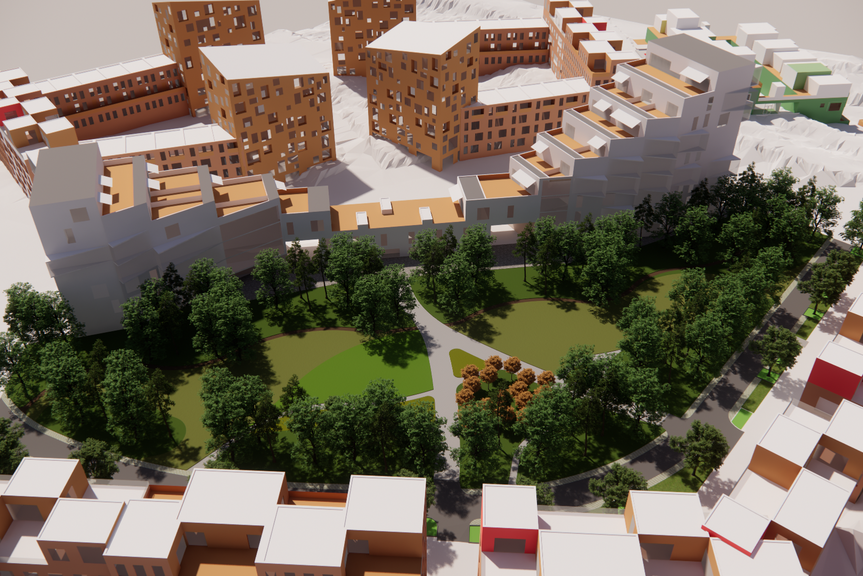
The northern part of Haakoninlahdenpuisto park will be a green space that will serve as a counterbalance to the southern part, which offers more activities. Haakoninlahdenpuisto is a completely new park built on the site of a former aggregate field in Kruunuvuorenranta.
Entire park expected to be completed in 2026
The northern part will have a variety of seating areas, including sun loungers, tables and benches. Ppark lighting will be installed on the northern edge of the park along the previously built path. At the request of residents, a dog toilet will also be installed.
Work will start with earthmoving and the transportation of recycled soil in October. The actual construction of the park will start in spring 2026. The ground level of the finished park will rise from the current level. Part of the western edge of the park will be built later, once the adjacent properties have been completed.
The contractor is Helsinki City Construction Services, Stara.
Edible garden and flowering lawn
The park's vegetation is divided into more manicured lawn areas and perennial plantings and more natural areas such as meadows and woodlands. The openareas will be mainly meadows, but a small area will be made into a lawn area reserved for lounging.
A flowering lawn that mimics the varied look of a wild lawn will be created around the edible garden and flowering trees. The edible garden will include a variety of cherries, currants, honeysuckles, elders and gooseberries.
The park will be planted with trees, shrubs, perennials, bulbs and traditional garden plants such as berry bushes and cherry trees. The choice of plant species emphasises diversity. Global warming and pollinators have been taken into account in the choice of plant species. The end result will be a park with multi-species plantings.
Circular economy tools at work
The park will be built using leftover soil from other construction projects in the area, and recycled substrates will be used for the grass, meadow and natural areas in the park. This will significantly reduce the carbon footprint of construction, while also introducing living soil with micro-organisms, seed banks and microbes into the park. To enrich the microfauna, decaying trees will be introduced into the park. Recycled natural stones will be used for stepping stones and seating areas.
Total area of new park exceeds one hectare
When completed, Haakoninlahdenpuisto park will be more than a hectare in size, divided into two sections across the middle by Haakoninlahdenkatu. The park is bordered by Stansvikin rantakatu in the south and Saaristolaivastonkatu in the north.
Playground opening celebrated on Sunday 2 November
The opening of the playground in the southern part of Haakoninlahdenpuisto park will be celebrated on Sunday 2 November, at 10.00. The park will be opened by Deputy Mayor for Education Reetta Vanhanen. The event will be hosted by the Kruunuvuorenranta residents' association.
The playground will have equipment for children of all ages. The indoor facilities of the playground will be located in the Kruunuvuoren Helmi multi-purpose building under construction in the adjacent block. The building will also house a school, a daycare centre and youth facilities. According to current estimates, the building will be completed by autumn 2027.
Small nature play areas opened later
The carbon footprint of the park's construction was successfully reduced through measures such as using recycled stone and slabs and surplus soil from other construction sites. Some of the play equipment is made from plastic debris collected from the oceans.
Small nature play areas have been created around the play enclosures, where the vegetation will first be allowed to grow and establish behind a protective wooden fence. These areas will be incorporated into playground use in a couple of years' time, when the seedlings have taken root and become strong enough to withstand small nature explorers.
The meadows and lawns in the park will also remain fenced off to allow plants to grow. There is a small mound sown with sunlit meadow plants in the southern part. During the first winter, visitors to the park should not sled down the mound, so as not to trample the tender, newly-germinated meadow vegetation and compact the soil.


